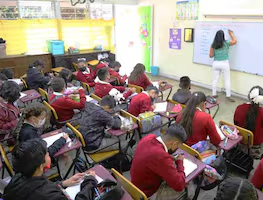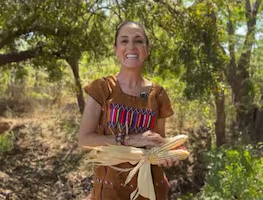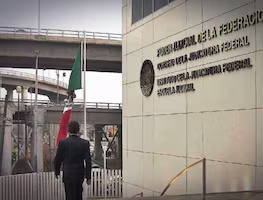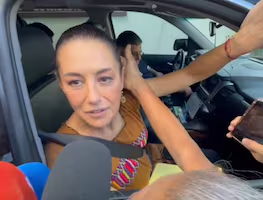Más Información

El primer megapuente de 2025 se acerca; ¿cuándo inicia y qué estudiantes tendrán descanso de 4 días?

Sheinbaum reitera protección a maíz mexicano; iniciativa enviada al Congreso rechaza siembra de trangénico

SIPINNA se suma a estrategia “México te abraza”; presenta recomendaciones para proteger niñez y adolescencia migrante

CEPL, en espera de orden del Tribunal Electoral; busca asumir proceso interrumpido del Comité del Poder Judicial

Tras sanciones de Trump a Colombia, Sheinbaum dice que hay que respetar a todos los países; “me tengo que informar bien para poder opinar”
On June 21, a longstanding feud over a wind-power project boiled over into violence, after at least 15 people were bludgeoned to death with stones and cement blocks, and some bodies were partly burned in San Mateo del Mar , Oaxaca .
It was later reported that an unknown number of people are missing and many more are wounded .
A day later, the local government confirmed that 13 men and two women were killed in what he described as an attack by a group of dissident townspeople . Authorities said the victims all lived in Huazantlán del Río .
Mayor Ponce Hinojosa
said an armed group formed by seven men was responsible for the brutal attack , when they tortured, burned, and killed 15 people.
In recent months, the same indigenous community has been subjected to torture, kidnappings, and homicide.
Recommended: 2,000 indigenous people displaced by violence in Chiapas
But those who successfully opposed wind power projects in the largely Indigenous area say the mayor’s followers ambushed them at a COVID-19 checkpoint and began shooting. The dissidents said “several” people were wounded but did not provide an exact figure on those wounded by gunshots .
The prosecutor's office in Oaxaca confirmed 15 fatalities and said a group of four detectives, 80 state police, and 39 National Guard members had been deployed to the crime scene. The National Guard could only rescue two men.
It was not clear whether the confrontations Saturday and Sunday in San Mateo del Mar began at one of the “sanitary” checkpoints that have sprung up in recent months to stem the spread of the novel coronavirus.

The area has been coveted for its open, windy coast, and the two sides have been feuding for years. The conflicts date back to 2012 when a consortium of companies tried to build a 396-megawatt off-shore wind farm planned for a narrow spit of land in a lagoon near San Mateo.
The opponents managed to block the project, arguing it would affect their fishing, farming, and sacred spaces.
Many residents belong to the Ikoots Indigenous group , also known as the Huaves .
After the tragic events, local lawmakers condemned the massacre in San Mateo del Mar and demanded the state government to guarantee governability and peace for the Ikoots . The local Congress also demanded an investigation and justice.
Recommended: The bloody results of agrarian conflicts in Oaxaca
Meanwhile, the local human rights commission described the incident as “extreme violence” and urged the Mexican government to solve the conflict.
The National Human Rights Commission said the Oaxaca government must protect and guarantee the safety of the community.
The massacre was announced on the same day that Public Safety Secretary Alfonso Durazo praised the south-eastern part of the country, where Oaxaca is located, as the safest part of the country.
“The southeast is particularly giving the best results in public safety, which is not easy anywhere, but specifically in the southeast, the crime rate is much, much less serious than in the rest of the country,” Durazo said.
gm





